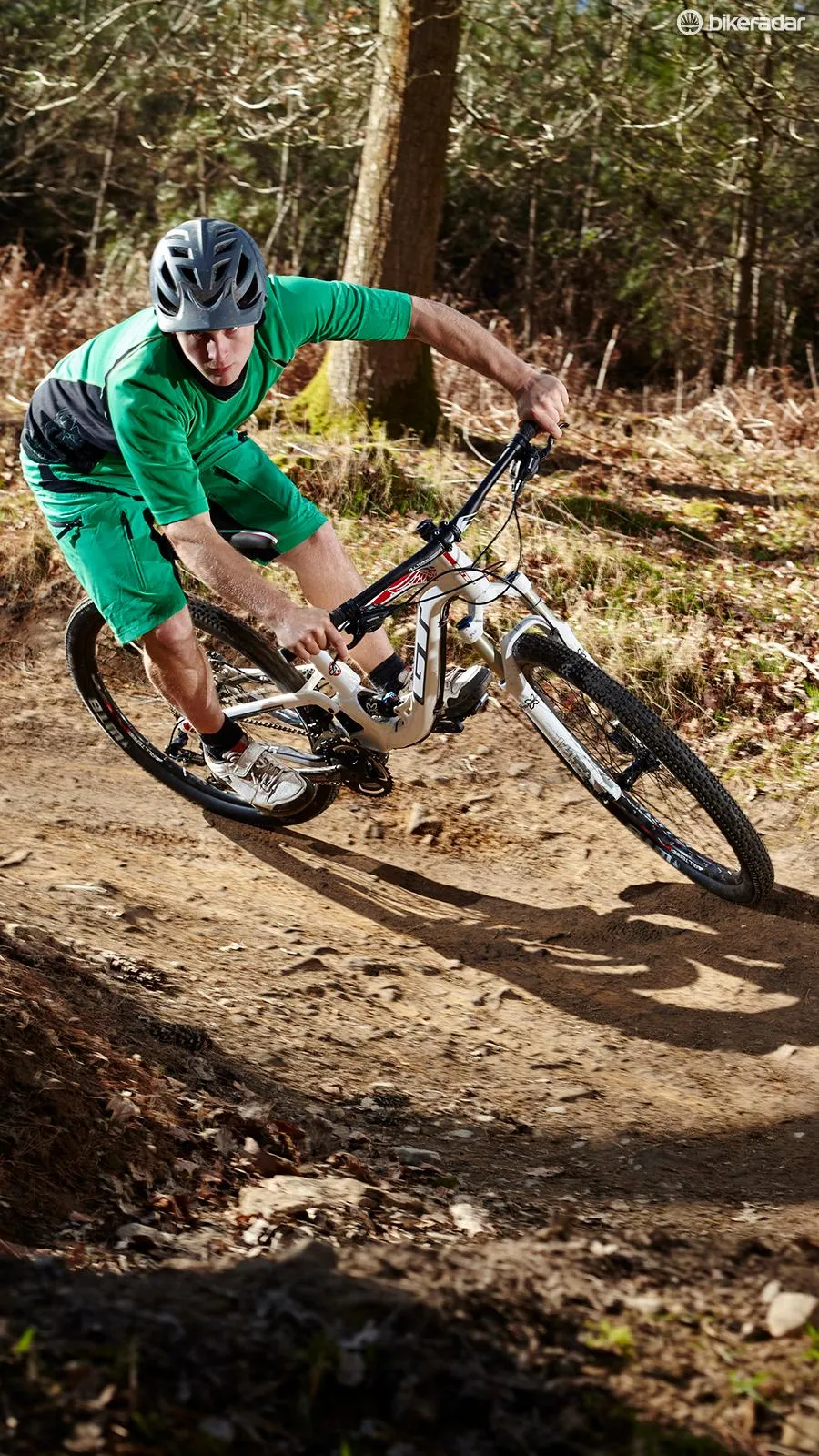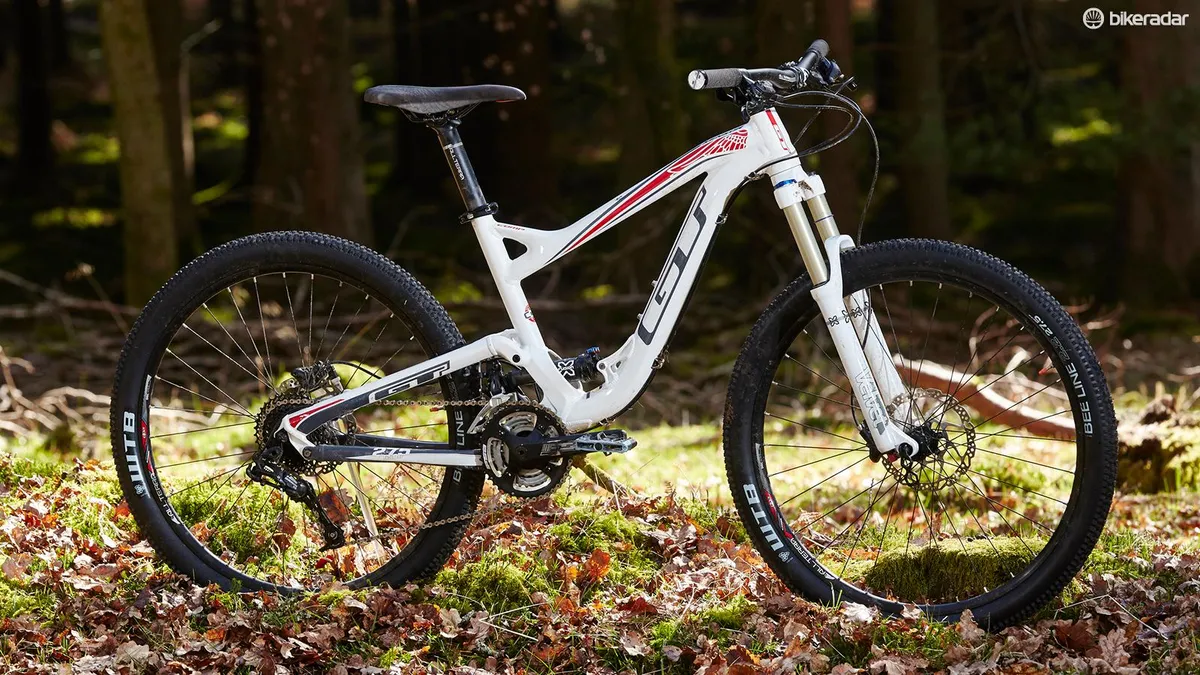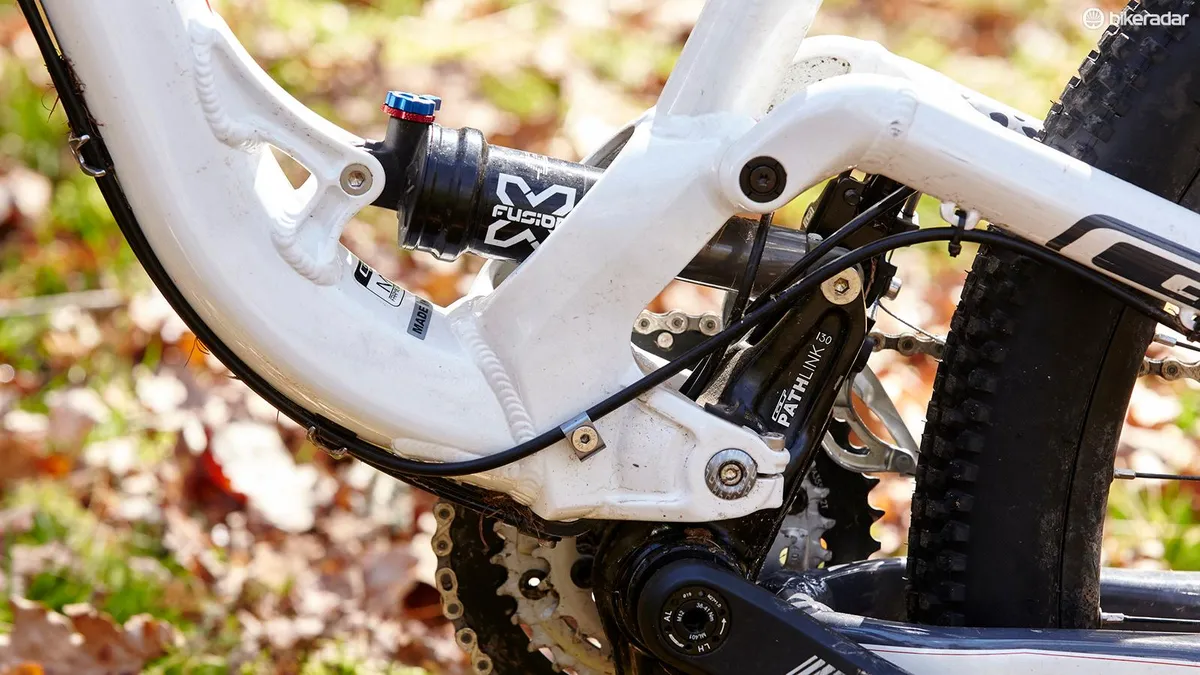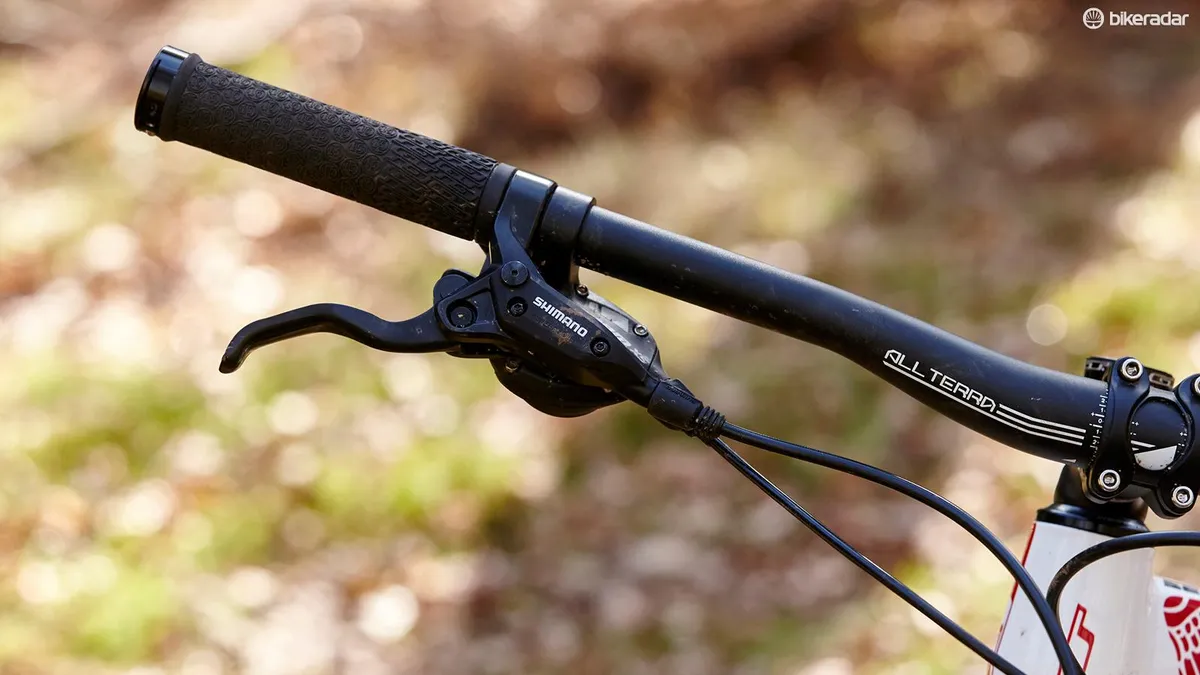GT’s Independent Drivetrain suspension setup – where the bottom bracket ‘floats’ between the main frame and rear end – has been around in various incarnations for many years. The latest variation on the theme repackages everything to lower the Sensor’s centre of gravity and make it lighter and stiffer. The AL Comp props up the bottom of the range, combining matched X-Fusion shocks with a SRAM transmission and Shimano brakes. But is it any good?
Frame and equipment: a strong chassis with some mixed finishing kit
There’s a lot of linkage gubbins and complicated-looking hydroforming going on around the Sensor’s nether regions, but the principle of the Independent Drivetrain is fairly straightforward. The system’s pivot point is high, giving the rear axle a slightly rearward path as it compresses through its travel. This is good news for small-bump sensitivity but bad news in terms of pedalling feedback. So GT isolates the transmission from the effects of chain growth with the Path Link rocker – a stout clamshell affair that ties the mainframe, chainstays, BB and shock together. As the suspension compresses, the BB moves back slightly to counter the rear axle’s rearward movement. The result is less pedal feedback and, supposedly, better bump eating. All the weight associated with the suspension is low and focused around the BB, which should be good news for handling.

GT’s suspension engineers have done a great job, creating a plush, versatile rear end that tracks accurately no matter what you throw at it
Independent Drivetrain bikes have generally been a little portly, but the new setup doesn’t appear to carry a weight penalty over other mid-travel bikes. It’s a shame about the QR rear end though – a 142x12mm axle would stiffen things up. X-Fusion provides the fork and shock, offering 130mm (5.3in) of rock-munching travel with adjustable rebound damping and a lockout lever at each end. The fork is a match for budget units from bigger brands, but our shock suffered from the same negative air chamber leak-down we’ve encountered on other X-Fusion shocks. We had to remove and replace the air can in order to recharge it and cure the initially harsh top-out. It’s a simple procedure, but irritating that it has to be done at all.
SRAM’s mid-range transmissions don’t tend to fare quite so well in long-term use as the Shimano equivalents, but the X5 derailleurs and shifters fitted to the GT provided clean shifts. We’re not convinced by the choice of WTB Bee Line treads though. Although they contribute to a light and lively-feeling wheelset that rolls quickly on dry, hardpacked trails, they quickly become a scary handful in greasier riding conditions. We’d switch them for something with a deeper, more open tread unless you always ride on well-drained trails.
Ride and handling: an impressive setup compromised by geometry
GT’s engineers have done their homework. While there are easier ways to build a rear suspension system, the Path Link rocker, compact rear end and low-mounted shock build into a noticeably stiff setup that gets on with its job without fuss. Even without the belt-and-braces rigidity of a 142x12mm axle, the high-pivot system delivers on its promise of devouring big, fast and square-edged hits with impressive alacrity. The good news for all-round trail use is that this high-speed rock swallowing doesn’t come at the expense of low-speed sensitivity.
Isolating the transmission from (most of) the effects of chain growth, combined with the slight rearward arc of the rear axle path, gives the Sensor an impressive ground-hugging ability on low-speed technical climbs. The ‘point, sit down and pedal’ approach will get you up most things, and the subtle back-and-forward motion of the bottom bracket sounds a lot more distracting than it really is.

Short, steep geometry is at odds with this bike’s big-hit potential and makes the front end needlessly twitchy
On the face of it, then, GT should have created an ideal all-round trail bike. The trouble is, they’ve also hobbled it with short, steep geometry that’s more cross-country race than all-day trail warrior. While this works fine at lower speeds and on tamer trails, steeper gradients and trickier lines will have you reaching for the anchors long before the fork or rear end have thrown in the towel. Nervous handling isn’t what you want on a bike that’s capable of swallowing boulder fields whole.
This leaves the Sensor with a split personality. Too heavy to be a true racer but not laidback enough to mix it with the best of the bigger-travel trail bikes, it suffers from not being able to make up its mind what it wants to be. And that’s a shame, because after years of development, the Independent Drivetrain system is pretty well sorted.




